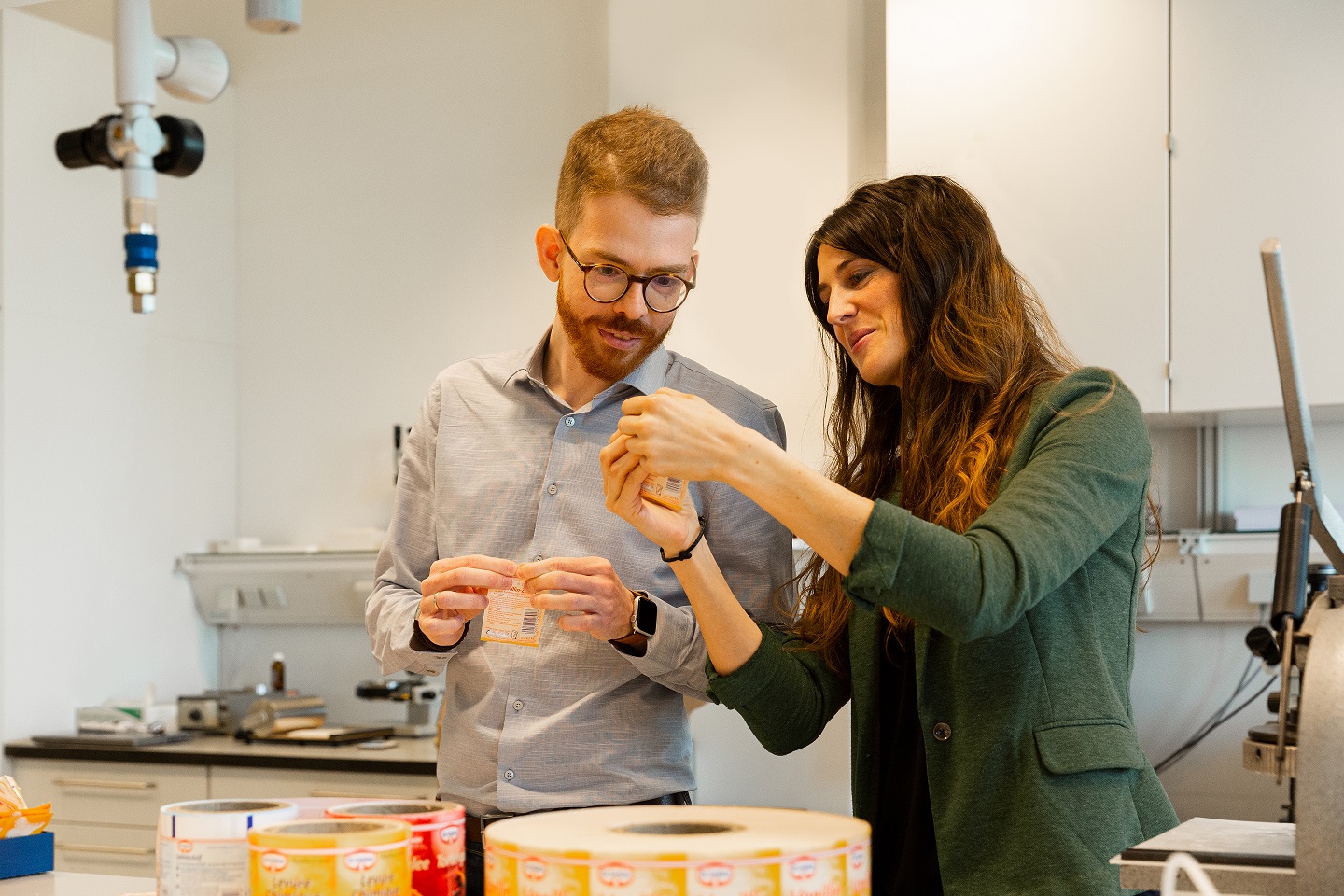Dr. Oetker Stories
Less waste, less packaging
We have set ourselves the ambitious goal of making our packaging completely recyclable, reusable, or compostable by 2030. Our international packaging development team is working hard on achieving this goal. In our story, we take you with us and show you which packaging we have already made more sustainable.

16.3.2023 • Sustainability
A world without waste - this is not only good for the air and oceans but also saves resources and thus protects the climate. Packaging materials consist of valuable resources such as wood and petroleum; the production process requires a lot of energy. That is why we make sure to reduce our packaging to the bare minimum. Our Dr. Oetker Sustainability Charter also states that our packaging should be recyclable, reusable, or compostable by 2030.
As little material as necessary, as recyclable as possible
How we can make our packaging more sustainable is something that Farina Voss, Executive Manager International Packaging Development at Dr. Oetker, and her team concern themselves with every day. ‘Whenever we develop or optimize packaging, the first step is always to look that we only use as little material as necessary’ she explains, ‘because the less material that has to be recycled at the end, the better.’ Particularly lightweight, particularly thin-walled packaging - of course, that also has limits. To find out precisely where these lie, a lot is demanded of the packaging during development.
"First and foremost, our packaging has a very important function: it has to protect our products in the best possible way: From production to transport to people's homes. Therefore, there will always be material that we cannot avoid", explains Farina Voss. “To avoid negative ecological consequences, we need to reduce packagings to the bare minimum or ensure that it is reused or recycled (‘Reduce, Reuse, Recycle’).” Since recycling systems vary widely around the world, Farina Voss and her team have developed clear guidelines, based on international public guidelines and recycling opportunities, on how to develop sustainable packaging around the world using particularly little, particularly recyclable material.
Already today, most of our product packaging is based on paper that can be completely recycled after use. At the same time, we are working on using as much recycled paper as possible ourselves. Our folding cartons already consist of 70 to 80 percent recycled material. We also rely primarily on paper-based material for transport packaging.
Everyone can do their part
"Basically, consumers can help us recycle by disposing materials separately after use," explains Farina Voss, with a High Protein Pudding cup in her/his hand. "For example, the sorting facilities allocate our chilled dessert packaging more reliably if the aluminum lids are completely separated from the cup before disposal in the household. Both together can then be placed in the recycling bin. The cardboard sleeves belong separately from the cup in the waste bin.
To help consumers recycle our packaging even more, Dr. Oetker will be introducing a new label system on our product packaging in the future. This will enable our consumers to see at a glance what material the packaging is made of and how it can be recycled - in relation to the respective market. We will also make this information available on our product websites.
For more information please contact:
Katharina Ahnepohl
Media Spokesperson Sustainability